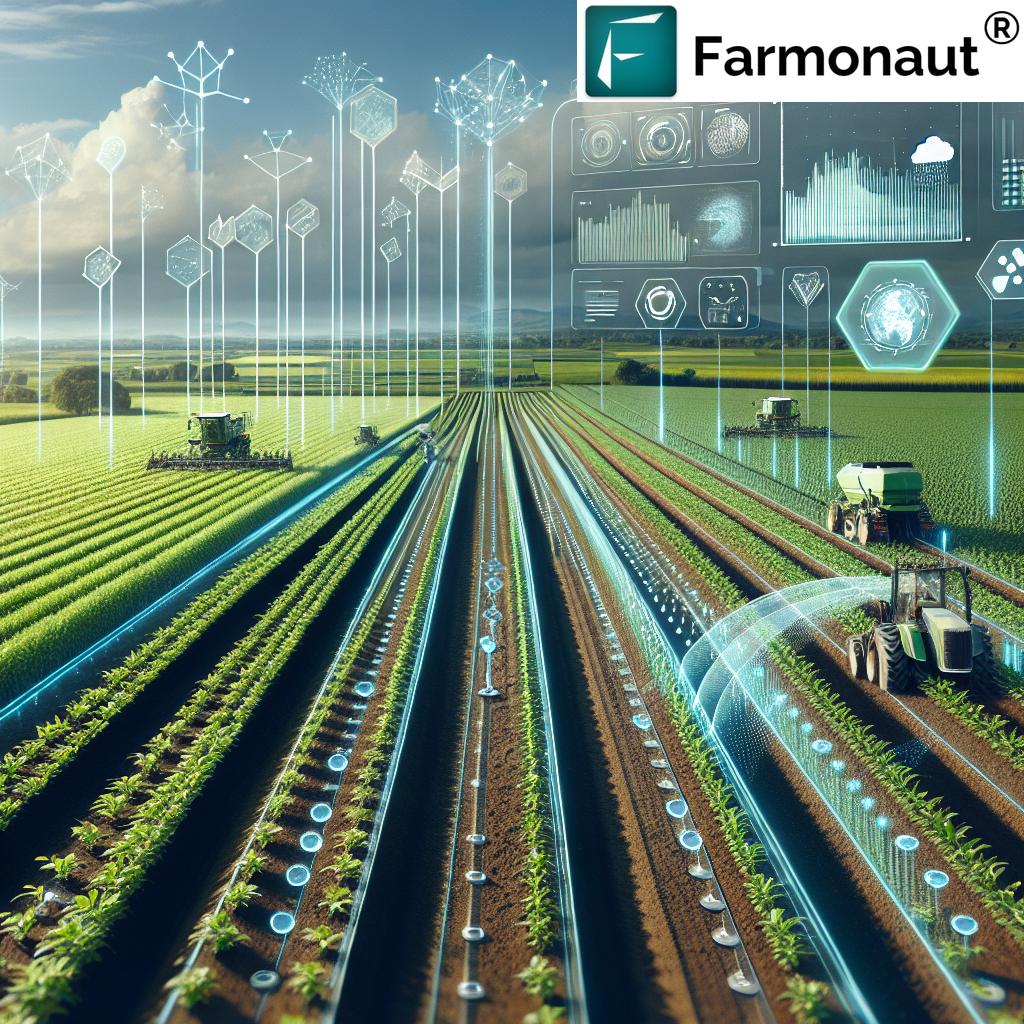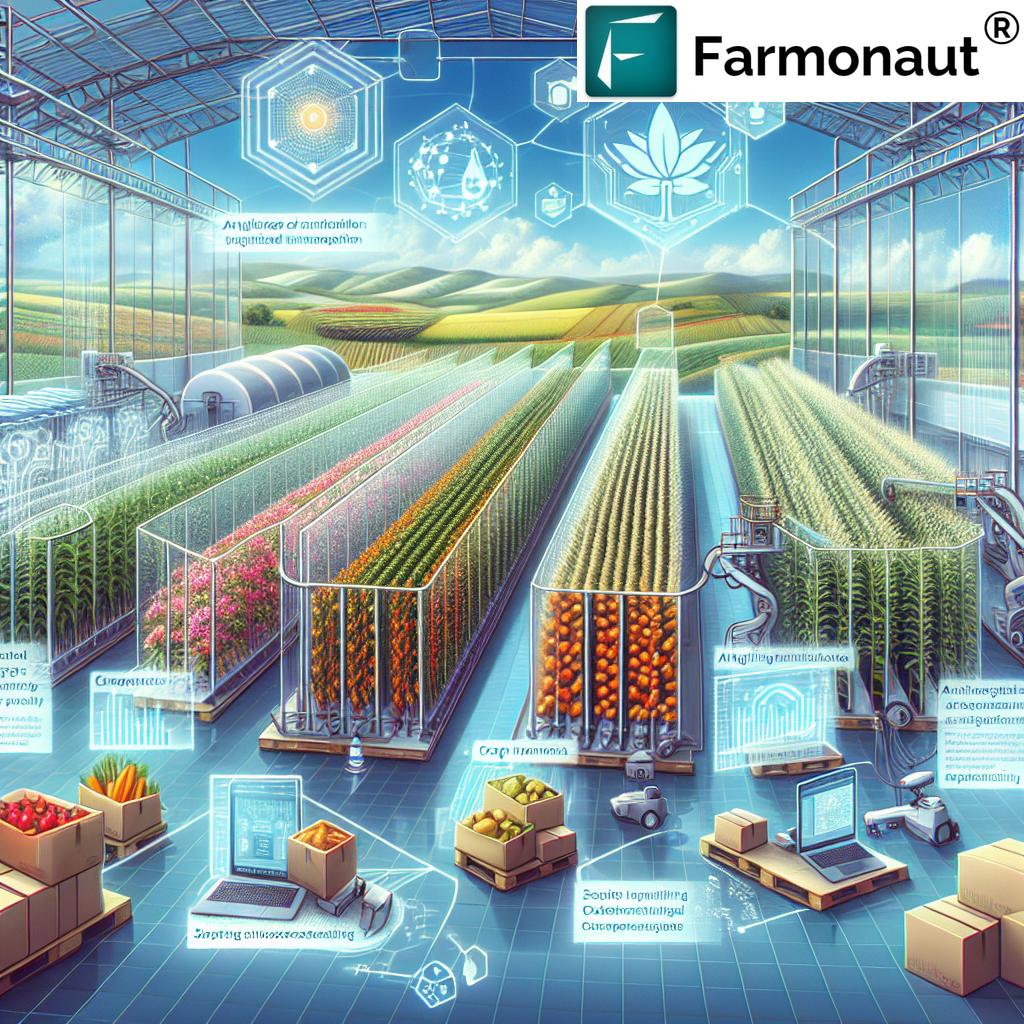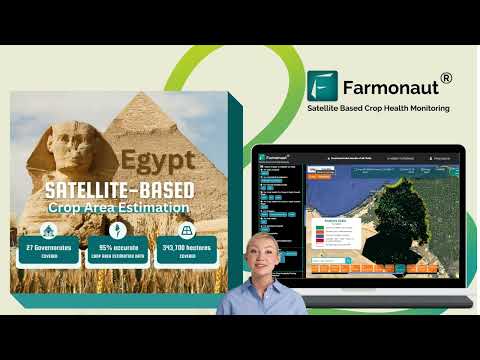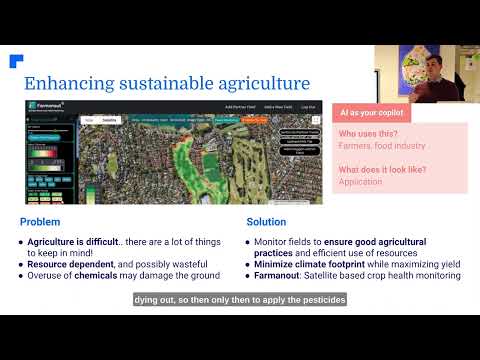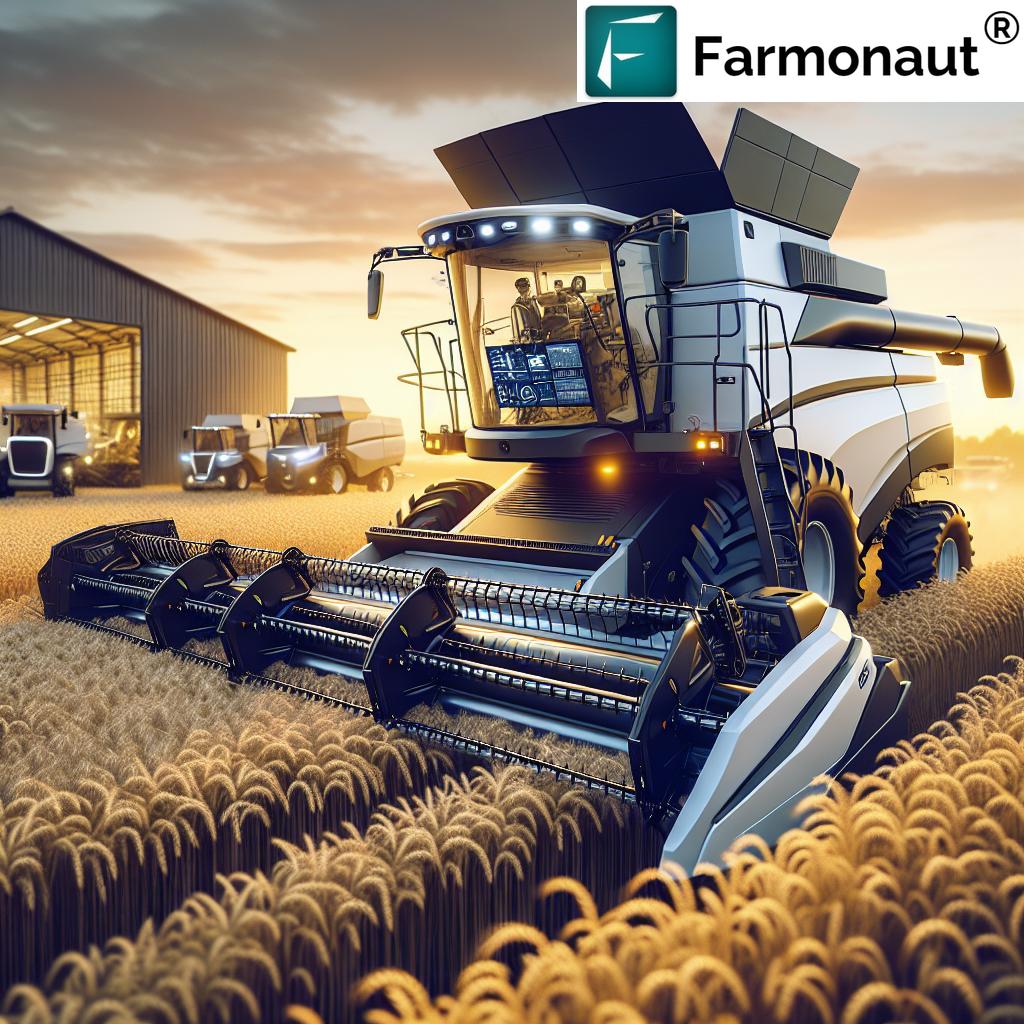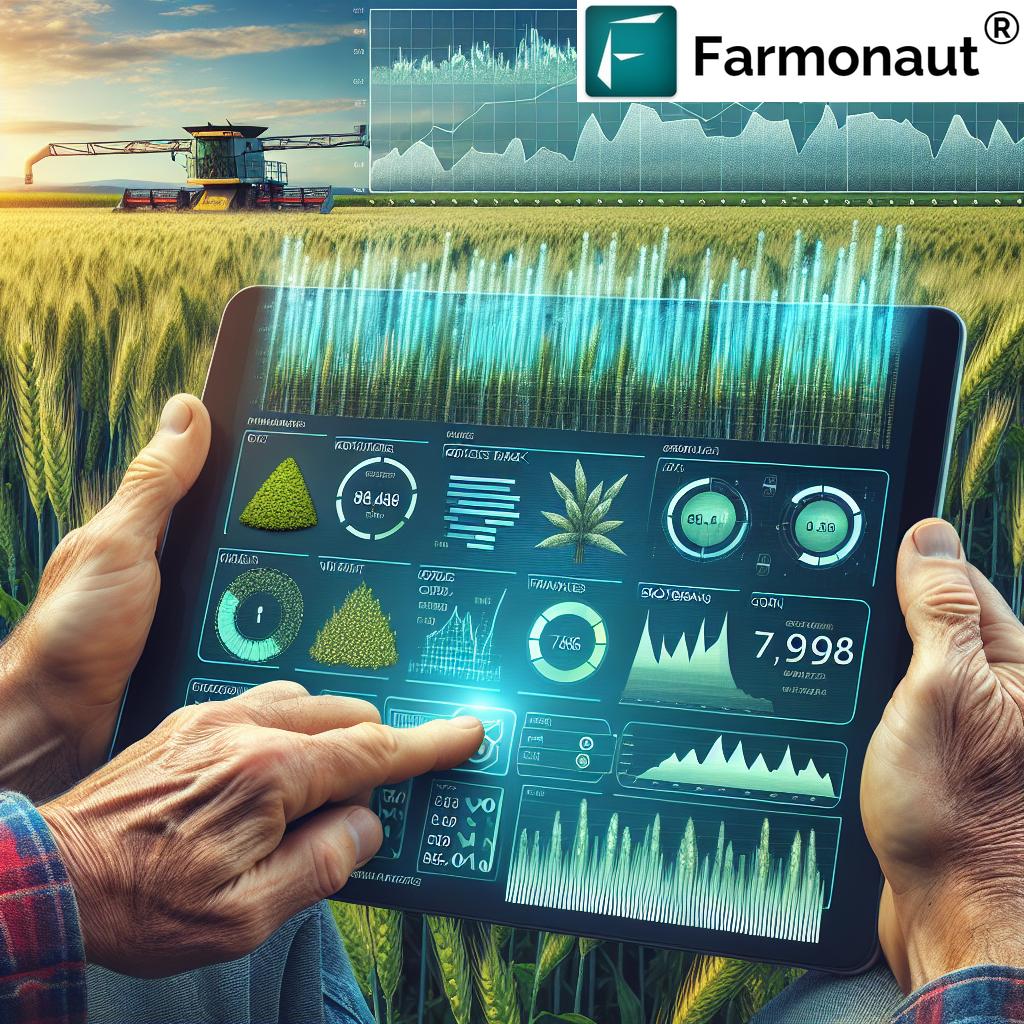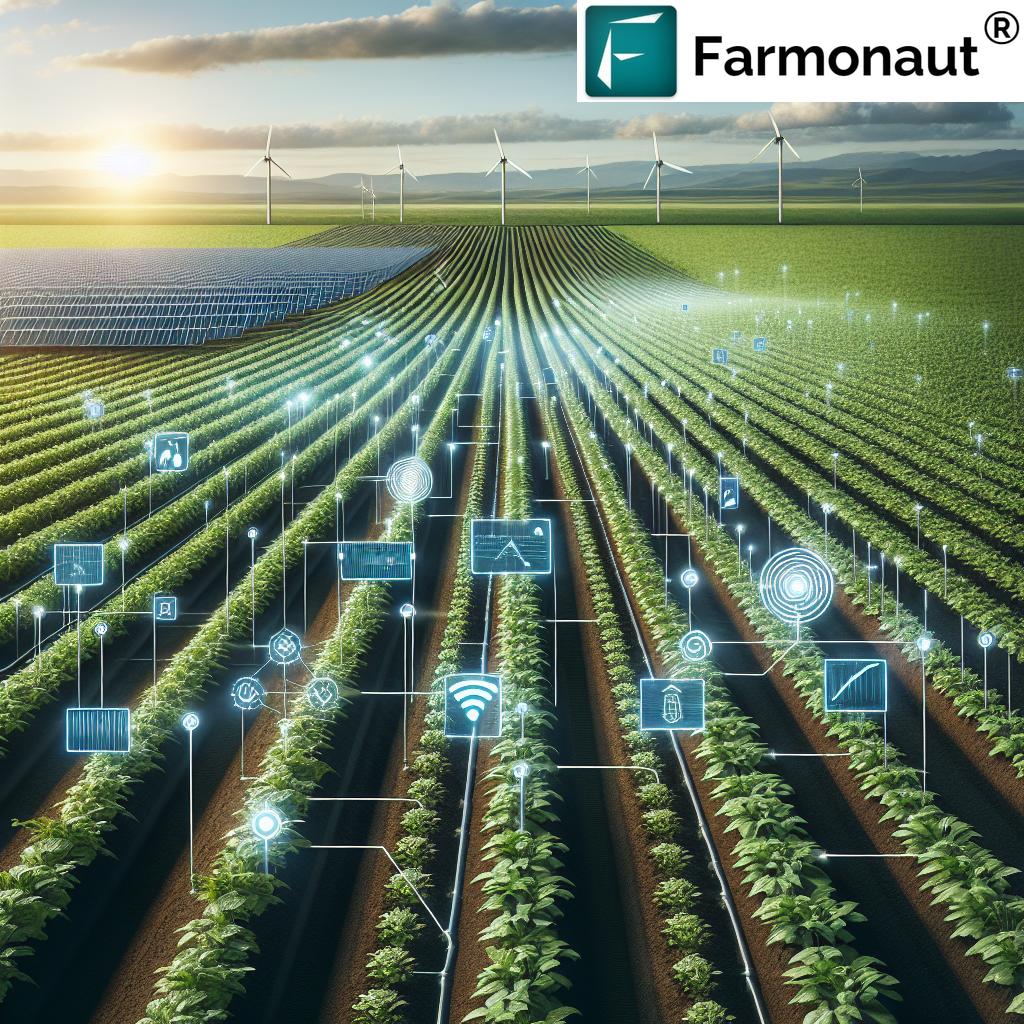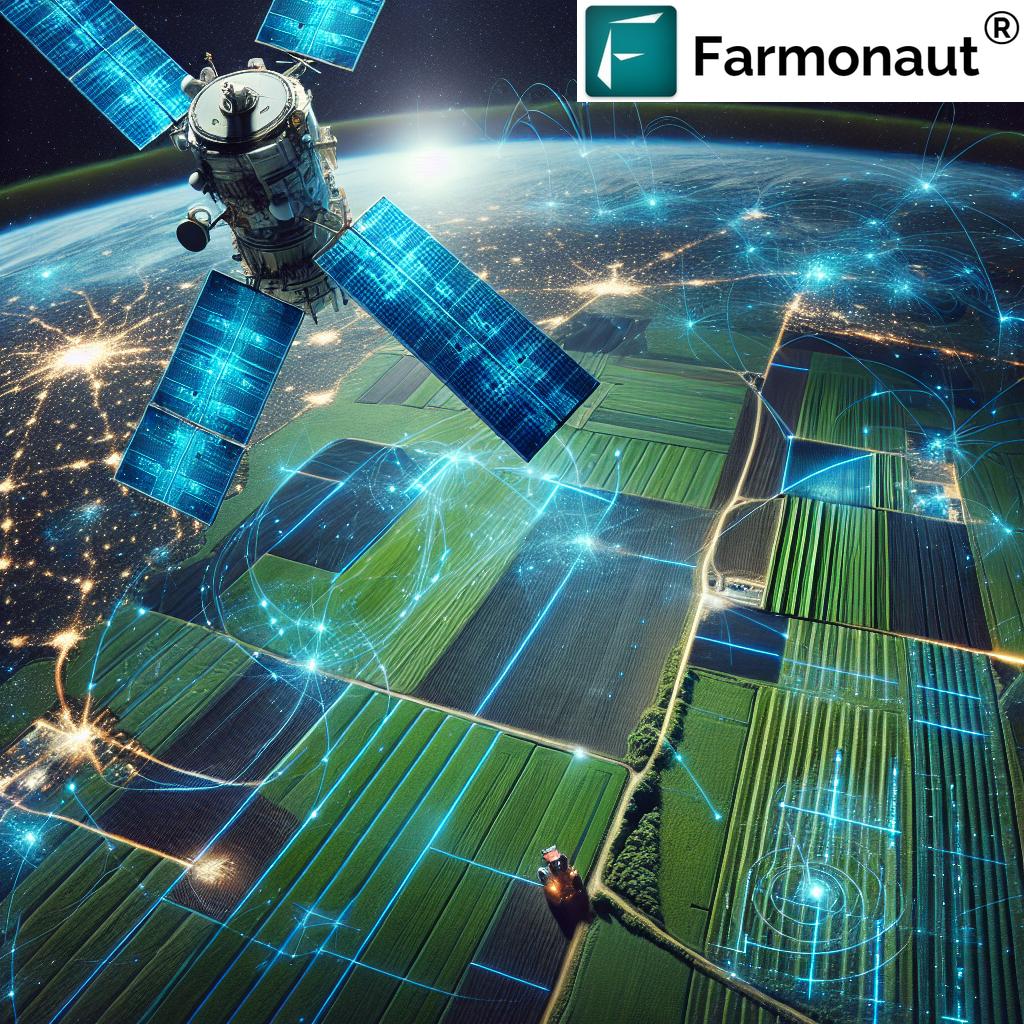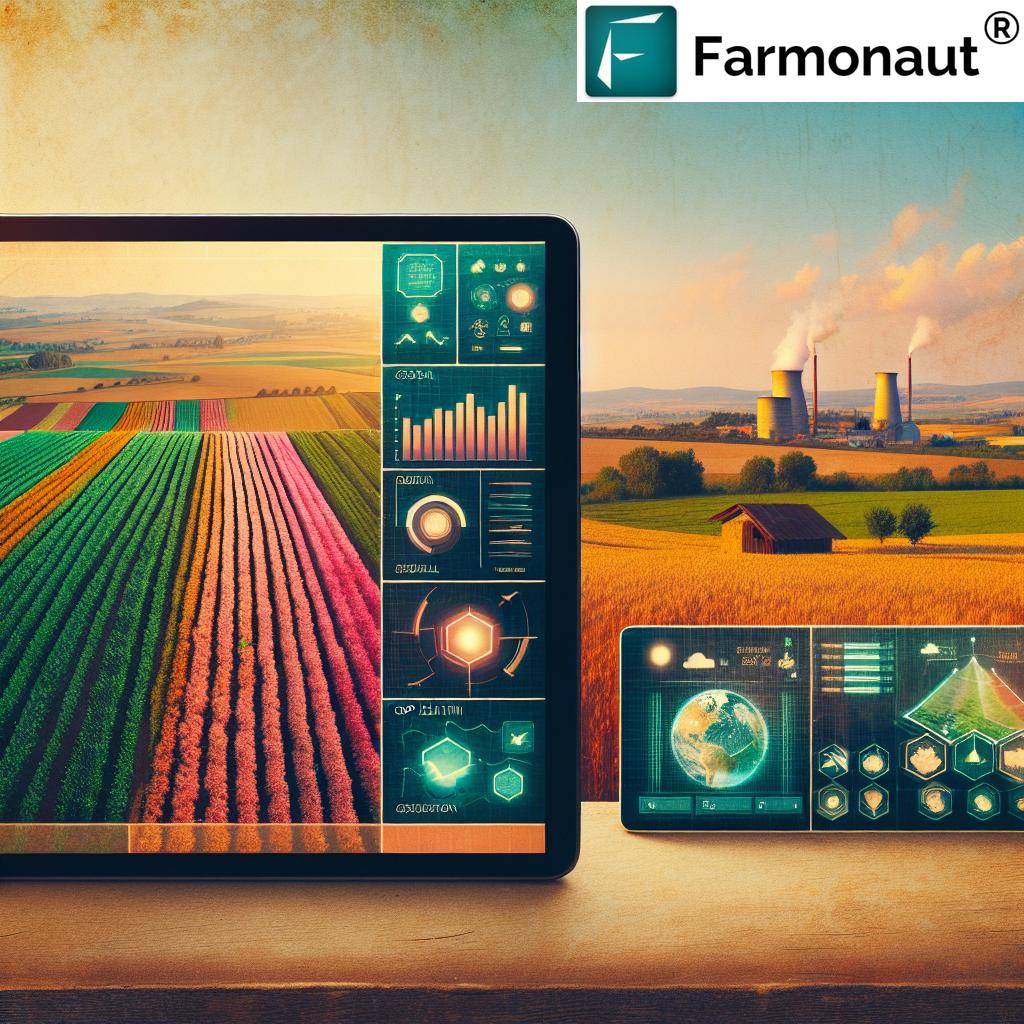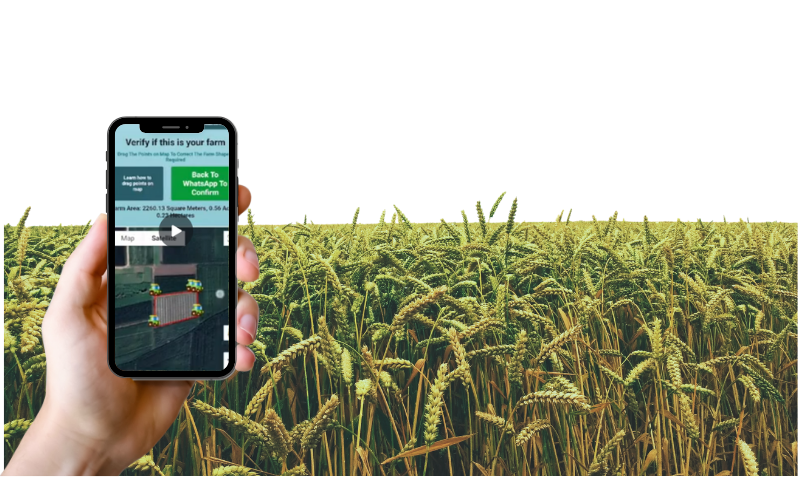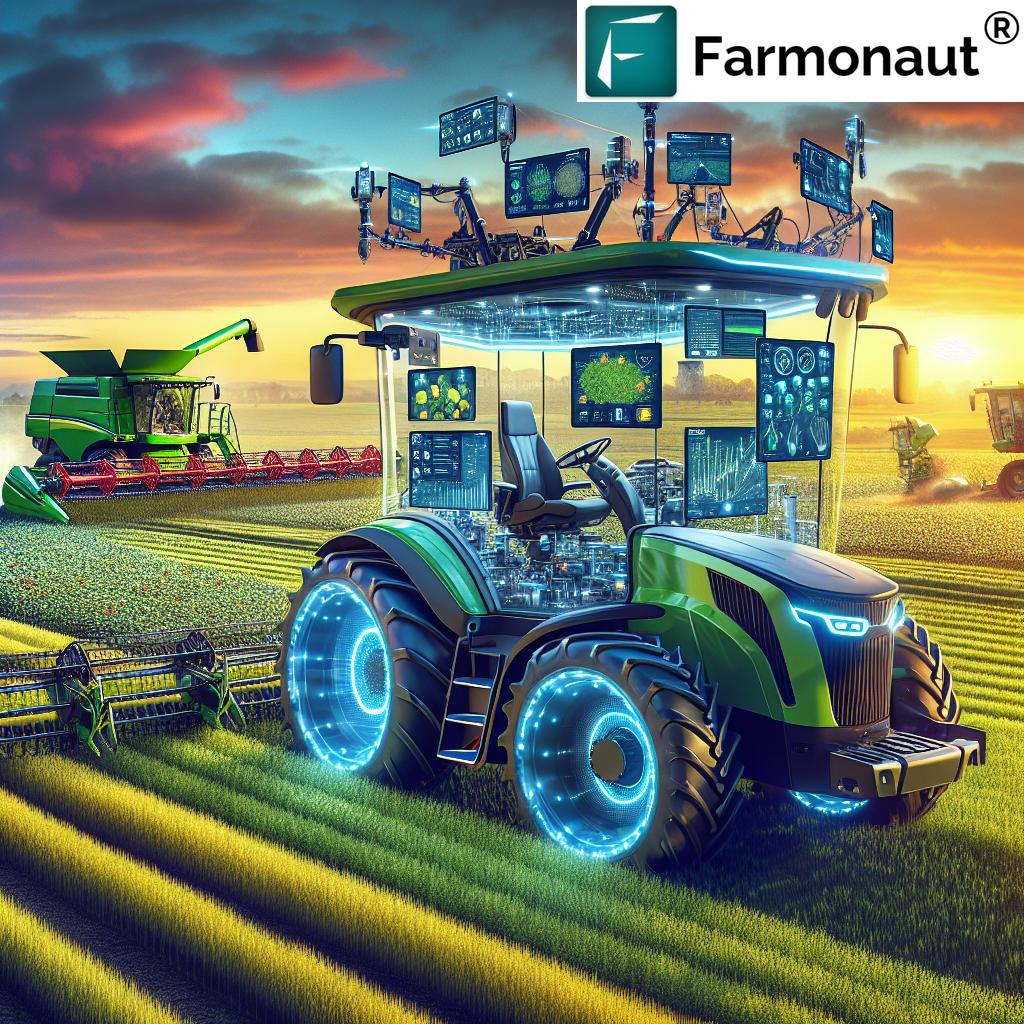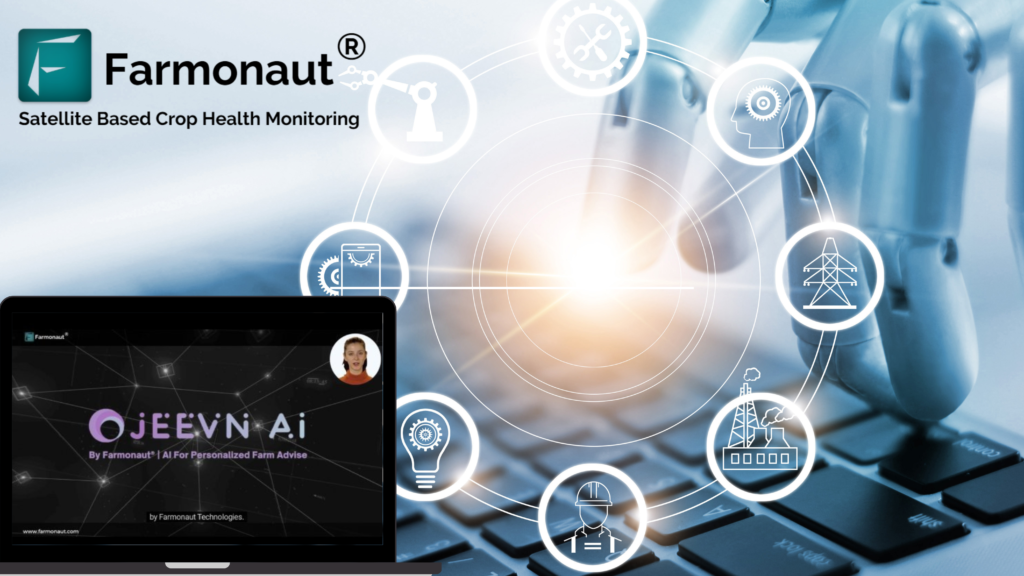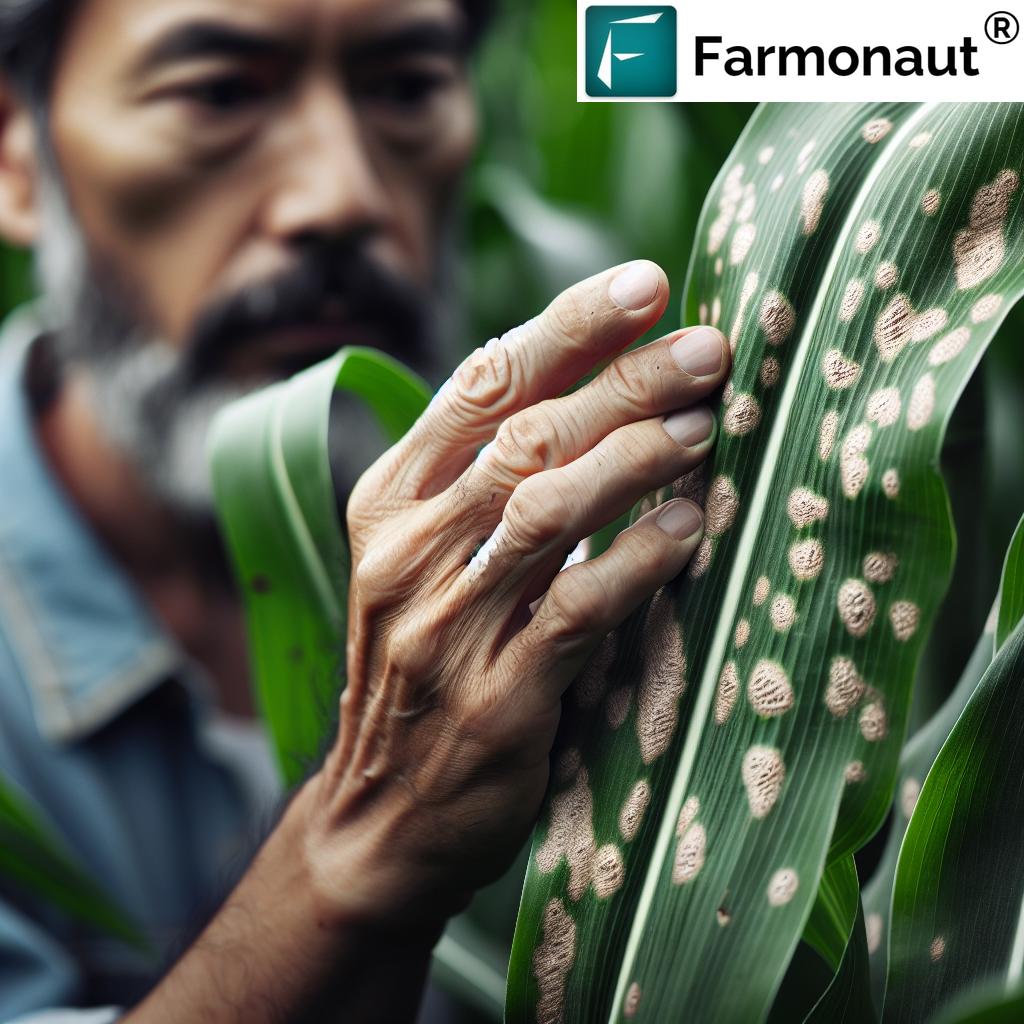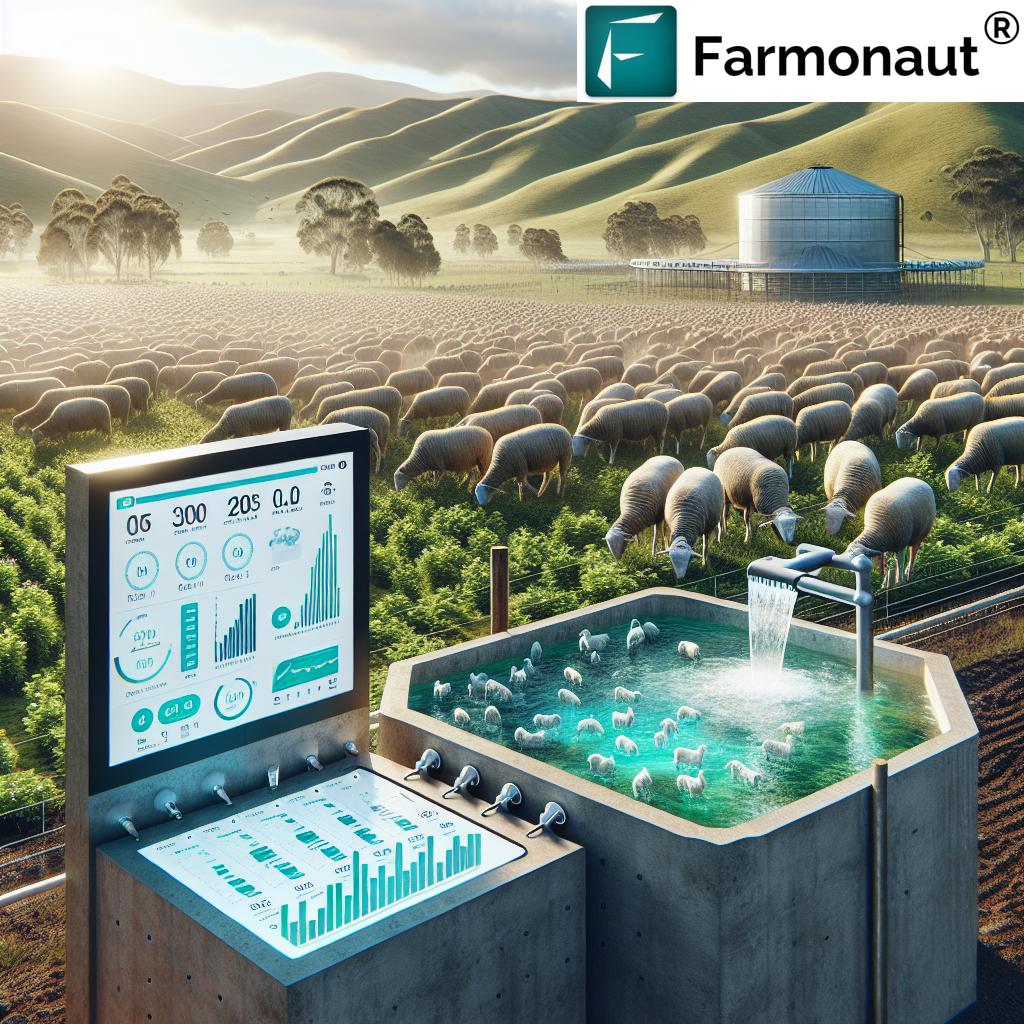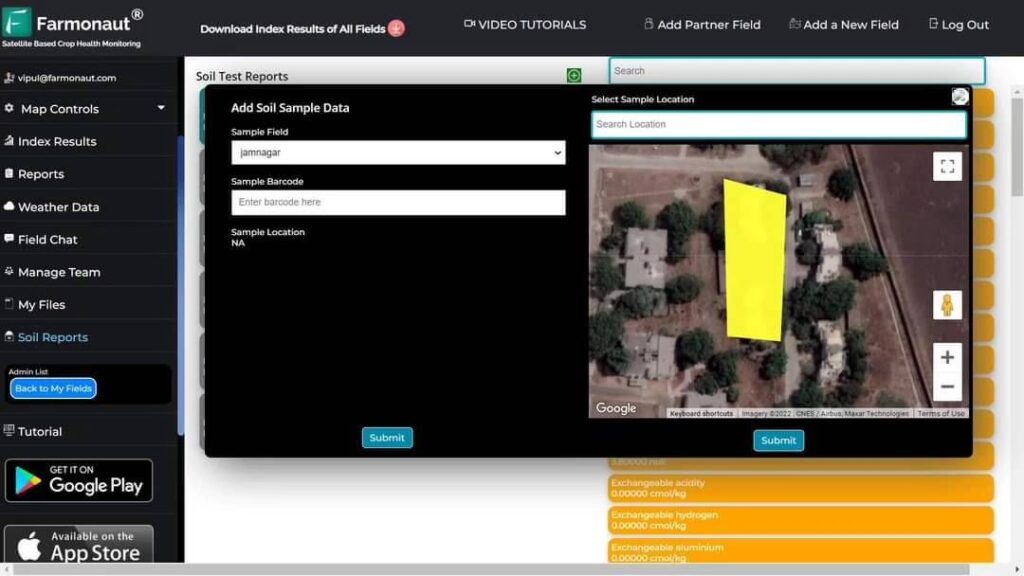Digital Agriculture: 7 Shocking Techs Skyrocketing Yields
Table of Contents
- Summary: Unlocking the Power of Digital Agriculture
- Introduction to Digital Agriculture
- Key Technologies Revolutionizing Yields
- Comparative Technology Impact Table
- Effects of Digital Agriculture Adoption
- Creating an Enabling Environment for Digital Agriculture
- Farmonaut: Pioneering Accessible Precision Agriculture
- Farmonaut Subscription Plans
- Frequently Asked Questions
- Conclusion: The Future is Smart, Sustainable & Data-Driven
Summary: Unlocking the Power of Digital Agriculture
Digital agriculture, widely recognized as smart farming or e-agriculture, is reshaping farms worldwide. By integrating cutting-edge technologies—from artificial intelligence (AI) to IoT in farming, blockchain, and satellite data analytics—we are witnessing a revolution in the way crops are grown, managed, and brought to market. Farmers can now unlock new levels of efficiency, boost crop yields, and implement sustainable agriculture practices that were unimaginable just a decade ago.
Modern tools help us collect, analyze, and act on farm data for everything from precise fertilization to pest control, irrigation optimization, and product traceability in the agricultural supply chain. Companies like Farmonaut are leading the way—making precision agriculture technologies affordable, scalable, and accessible to all, using satellite imagery and powerful digital processing.
Introduction to Digital Agriculture
As the global population accelerates and climate change intensifies, traditional agricultural practices simply can’t keep up with the demand for food and resource stewardship. Our farms need to do more with less—less water, fertilizer, pesticide, labor, and energy.
Digital agriculture emerges as the bridge to a smarter, more resilient, and productive food system. It blends AI, data analytics, advanced sensors, remote and satellite imagery, automation, and blockchain to:
- Enable data-driven decisions at every stage of the agri-food value chain (from soil preparation to market)
- Optimize inputs: use just the right amount of water, fertilizer, and pesticide—minimizing waste and saving costs
- Predict crop health, weather shocks, pest outbreaks, and market prices more accurately
- Boost resource efficiency and promote sustainable, environmentally friendly growing practices
- Increase yields, lower risks, and enhance transparency—for both farmers and consumers
We are at the dawn of a new agricultural era—where every field, plant, and kilogram of input can be precisely measured, monitored, and optimized.
Key Technologies Revolutionizing Yields in Digital Agriculture
Below, we explore the seven most transformative digital agriculture technologies—each with the potential to skyrocket yields and redefine how we farm and manage food systems.
1. Precision Agriculture: Targeted Input, Maximum Output
Precision agriculture technologies form the backbone of smart farming solutions. Using GPS-guided mapping, GIS analysis, and multispectral satellite imagery, we can gather vast amounts of data about soil conditions, field variability, moisture, and plant health.
Key innovations include:
- Variable Rate Technology (VRT): Adjust fertilizer, water, and pesticide application across specific field zones, minimizing input waste and maximizing yield where needed.
- Remote Sensing & Mapping: Monitor crops and soil health using near-real-time imagery for rapid intervention and resource optimization.
- Geo-spatial Tools: Enable zone-based management—targeting interventions to a micro scale, sometimes even down to individual plants.
Impact: Studies show yield increases between 9% and 54% depending on crop and technology used, with significant reductions in input use and environmental impact.
Farmonaut’s satellite-based large-scale farm management platform puts these tools in every farmer’s hands, using just a mobile device or PC—no expensive on-farm hardware.
2. Robotics and Farm Automation Systems: Redefining Labor
Robotics and automation are replacing tedious manual work with precision, speed, and consistency. Here’s how automated machines, GPS-guided tractors, and autonomous equipment are transforming farms:
- Planting & Seeding Robots: Ensure uniform planting patterns and depth, improving germination and reducing seed waste.
- Weeding & Harvest Automation: Computer-vision-enabled machines identify weeds, pests, and harvest readiness—targeting chemical application and reducing labor costs.
- Guidance Systems: GPS autopilot tractors deliver precise field operations and minimize soil compaction.
By optimizing operations and minimizing operator fatigue, farm automation systems not only increase productivity but also enhance sustainability and operational efficiency.
3. IoT in Farming: Sensors and Connected Devices
The Internet of Things (IoT) in farming deploys a web of sensors across fields, soil, and equipment—providing real-time insights into environmental conditions:
- Soil Moisture Sensors: Guide irrigation systems to apply water only when and where it’s needed.
- Weather Stations & Nutrient Sensors: Anticipate climate stress and soil nutrient deficiencies—enabling timely application and disaster mitigation.
- IoT-Enabled Irrigation: Automates watering at plant-level precision, optimizing water use, and preventing both drought and excess moisture.
The flood of sensor and device data is processed by analytics platforms such as Farmonaut, which offers real-time soil moisture monitoring and crop health alerts via its app and API (API Developer Docs).
4. Unmanned Aerial Vehicles (Drones): The Bird’s Eye Advantage
Drones (UAVs) are now indispensable for aerial mapping, crop scouting, and health assessment in digital agriculture:
- High-resolution Imagery: Pinpoints field variability such as drought stress, pest outbreaks, and nutrient deficiencies at scale.
- Multi-spectral Cameras: Capture invisible issues like early-stage disease or variable growth, enabling precision interventions.
- Irrigation & Pest Targeting: Direct inputs—via VRT or drones themselves—exactly where needed, saving costs and boosting plant health.
Drone data, combined with satellite analytics, forms a feedback loop—letting us act fast to reduce risks and maximize yields.
5. Big Data and Agriculture Data Analytics: Actionable Insights
Agriculture generates massive volumes of data—from sensors, IoT devices, weather feeds, drones, and satellites. Big data analytics and machine learning unlock insights that can:
- Map yield variability, soil trends, and historical field patterns
- Predict future crop yields based on weather and management scenarios
- Alert farmers about optimal planting, harvesting windows, & risk factors
- Prioritize actions for soil health, pest control, and irrigation
Farmonaut’s real-time analytics engine fuses satellite & weather data to deliver personalized, field-specific alerts—empowering smarter decisions at every stage.
6. Artificial Intelligence in Agriculture: The Smart Brain
Artificial intelligence (AI) in agriculture elevates our ability to predict, optimize, and automate even further:
- Disease & Pest Prediction Models: Analyze satellite and sensor streams to spot risk patterns—enabling early, targeted management.
- Resource Allocation Algorithms: AI constantly learns from historic and real-time farm data, improving fertilizer, water, and input optimization strategies with every crop cycle.
- Farm Automation Systems: Control planting, irrigation, and harvest schedules, reducing workload and increasing precision.
Farmonaut’s Jeevn AI Advisory System illustrates this by delivering customized, adaptive recommendations to each farmer—based on live data and sophisticated models.
7. Blockchain in Agricultural Supply Chain: Trust & Transparency
Supply chain transparency is now essential. Blockchain technology enables the secure, tamper-proof recording of data at every step in the food production chain:
- Traceability: Track crops from seed to shelf—guaranteeing authenticity (e.g. organic), fair trade, and reducing fraud.
- Verification: Ensure data shared along the chain (e.g. origin, quality, handling) is trustworthy for both producers and consumers.
- Sustainable Supply Chains: Support carbon footprint tracking and sustainable certifications, adding real value for agribusinesses.
Farmonaut’s Blockchain Traceability platform provides integrated solutions for corporates, food companies, and farmers—building confidence across the agricultural supply chain.
Comparative Technology Impact Table: Digital Agriculture’s Leaders
| Technology Name | Function | Estimated Yield Increase (%) | Efficiency Boost (%) | Sustainability Impact (Scale 1-5) | Example Use Case |
|---|---|---|---|---|---|
| Precision Agriculture | Geo-mapping, Variable Rate Application (VRA), remote sensing/analytics | 9 – 54% | 15 – 40% | 5 | Applying fertilizer & water only where needed on field zones |
| Robotics & Automation | Automated planting, GPS-guided machinery, robotic weeding/harvest | 10 – 25% | 20 – 35% | 4 | Autonomous sowing & weeding robots reduce input and labor |
| IoT & Sensors | Real-time environmental & soil monitoring, plant-level analytics | 5 – 15% | 10 – 30% | 5 | Soil moisture sensors triggering smart irrigation |
| Drones (UAVs) | Aerial imagery, multi-spectral crop scouting, field variability detection | 10 – 30% | 15 – 25% | 4 | Identifying pest stress, guiding rapid response |
| Big Data & Analytics | Aggregated farm data analysis, predictive yield models | 10 – 25% | 10 – 20% | 4 | Forecasting yield and optimizing planting schedules |
| AI & Machine Learning | Automated disease/pest prediction, adaptive input optimization | 15 – 30% | 20 – 35% | 5 | AI-driven crop management advice via apps |
| Blockchain | Supply chain traceability, carbon & data verification | Up to 5% | 10 – 15% | 5 | Documenting food from farm to table for transparency |
Effects of Digital Agriculture Adoption
Digital agriculture is more than technology for technology’s sake—it fundamentally redefines efficiency, equity, and sustainability across both smallholder and industrial farms.
Boosting On-Farm & Market Efficiency
- On-Farm: Precision agriculture technologies allow variable rate input application, meaning fertilizer, pesticide, irrigation, and seed are applied only where and when they’re needed. This minimizes costs, water, fertilizer use, and environmental risks while boosting average crop output. For instance, guidance systems increased U.S. peanut yields by 9%, with soil maps showing 13% increases.
- Off-Farm/Markets: Digital agriculture also streamlines agri-food value chains. E-commerce, online ICT platforms, mobile price discovery tools, and digital payments improve market efficiency and reduce price distortions. In India, e-choupal internet kiosks increased farmer profits by leveling the information playing field.
- Reducing Market Information Asymmetry: By distributing real-time price and demand information to both farmers and buyers, digital agriculture reduces costs, volatility, and abuse in markets. In remote United States and global markets, this can make the difference between loss and profit.
With Farmonaut’s satellite-based crop loan and insurance verification, financial institutions and farmers gain faster, more transparent access to essential agri-finance tools.
Enabling Farmer Equity & Access
Digital agriculture is a powerful equalizer. By reducing transaction costs and democratizing access to information, it breaks barriers for smallholder and marginalized farmers:
- Financial Inclusion: Digital credit scoring models—leveraging phone use, digital payments, and satellite data—allow banks to assess the true risk profile of farmers. This extends banking, insurance, and microfinance to rural populations previously left out.
- Market Access: Through mobile platforms and online marketplaces, farmers access new buyers and fairer prices. ICTs help bridge urban/rural divides, especially crucial in remote or underdeveloped United States regions and globally.
- Knowledge Sharing: AI-powered advisory, apps, and helplines transfer global best practices—even to non-literate users—at low cost, uplifting millions.
Farmonaut’s fleet management and resource optimization tools allow agribusinesses and large farms to manage labor, logistics, and machinery efficiently—reducing costs and spreading benefits to all team members.
Environmental Sustainability: Farming with Nature, Not Against It
- Resource Efficiency: Variable rate irrigation and fertilization sharply reduce overuse. E.g., EU could save 30,000 tons of pesticides via digital weed management; citrus orchards in Spain cut water by 25% but kept yields constant.
- Reduced Externalities: Less fertilizer runoff, lower greenhouse gas emissions, and minimized soil erosion benefit the environment and public health.
- Carbon Accountability: With digital carbon footprint tracking, agribusinesses prove their eco-friendly status to consumers and regulators.
Sustainable agriculture practices made possible by digital tech are not just “good for the planet”—they’re vital for profitable, future-proof farming.
Learn more on Farmonaut’s carbon footprinting solutions.
Creating an Enabling Environment for Digital Agriculture
Despite the clear benefits, digital agriculture adoption in the United States—and globally—remains uneven. Farm-level uptake varies by technology, crop type, and region. For instance, GNSS guidance systems are adopted widely, while VRT often sees lower penetration due to investment requirements.
Key enablers for spreading digital agriculture include:
- Policy and Regulation: Clear frameworks encourage investment and ensure digital systems benefit all.
- Infrastructure: Universal internet and mobile access allow real-time farm data sharing and remote support—even in rural areas.
- Cost-Effective Platforms: Affordable, subscription-based solutions (like Farmonaut’s, see below) democratize access to world-class precision agriculture technologies.
- Training & Awareness: Building trust and digital literacy among farmers is vital for large-scale adoption.
Encouragingly, the rapid spread of digital tools—especially ICTs, mobile apps, and e-commerce—will further accelerate the transition to sustainable, high-yielding agriculture.
Farmonaut: Pioneering Accessible Precision Agriculture
Farmonaut is ushering in the new era of precision agriculture, making high-tech solutions available not just to multinationals—but any farmer, agribusiness, government, or food company via easy-to-use web, mobile, and API platforms.
What sets Farmonaut apart?
- Satellite-Based Crop Monitoring: Real-time crop health, soil moisture, field mapping, and irrigation insights—no on-farm sensors required.
- AI-Powered Advisory (Jeevn AI): Personalized crop advice—from weather forecasts to pest alerts.
- Blockchain Traceability: Digital chain of custody and product verification—for trust and value.
- Fleet, Resource & Environmental Tools: Fleet management, carbon footprint tracking, and more.
Pricing is flexible and scalable, from single farmers to large enterprises. The system is hardware-light, affordable, and can be managed from any location via a smartphone or PC.
Want to go deeper?
- Farmonaut’s carbon footprinting tools help you comply with global standards.
- Crop area estimation, insurance verification, and plantation advisory are just a tap away: Explore Farmonaut solutions now.
Farmonaut Subscription Plans
Whether you’re a United States grower, international agribusiness, or agri-tech developer, Farmonaut offers simple, transparent subscription tiers—choose the plan that matches your farm size, update frequency, and features required.
Wide access is the goal—empowering everyone from individual farmers to multi-thousand-hectare agribusinesses.
View web and app options above, or subscribe directly:
Frequently Asked Questions: Digital Agriculture & Farmonaut
What is digital agriculture and how does it differ from traditional farming?
Digital agriculture, also known as smart farming, uses advanced technology like AI, sensors, drones, satellite imagery, and blockchain to optimize every aspect of farming—from soil preparation to post-harvest logistics. Unlike traditional farming, it delivers precise, data-driven decision-making and optimizes resources for better yields and sustainability.
How can digital agriculture technologies help increase crop yields?
By using data to target inputs (water, fertilizer, pesticide) exactly where and when crops need them, digital agriculture prevents waste and ensures that every plant can reach its yield potential. AI-driven predictions and remote monitoring also reduce risk and losses from pests, diseases, and weather surprises.
Can smallholders in developing countries use digital agriculture?
Absolutely. Platforms like Farmonaut are designed to be affordable, mobile-friendly, and hardware-light, requiring only a smartphone and basic skills. Digital tools level the playing field, giving smallholders the same data advantage as large corporate farms.
What is precision agriculture and what does VRT mean?
Precision agriculture uses detailed geo-mapping and real-time data for targeted management. Variable Rate Technology (VRT) means inputs are applied in precisely determined doses—at the right place and right time, not uniformly across the whole field. This boosts both efficiency and yield.
How does blockchain build transparency in the food supply chain?
Blockchain records every event or transaction in the agricultural supply chain—from farm to consumer—on a tamper-proof ledger. This guarantees traceability and authenticity, making food systems safer, more sustainable, and more trustworthy.
How does Farmonaut’s platform integrate with other agri-tech systems?
Farmonaut offers a comprehensive API with detailed developer docs—allowing seamless integration of satellite imagery, crop health analytics, weather prediction, and more into your custom apps, farm software, or research platforms.
Conclusion: The Future is Smart, Sustainable & Data-Driven
The era of digital agriculture is here. As farmers, agribusinesses, and policymakers, we are responsible for embracing the technology and innovation that will feed the world in a changing climate. From precision agriculture technologies to AI-powered advisory, IoT-enabled farms, and blockchain-based transparency, the future of sustainable food production is rooted in data, connectivity, and intelligence.
By choosing accessible, scalable smart farming solutions like Farmonaut, we put the tools of tomorrow into the hands of everyone—regardless of location, size, or starting capital. It’s time to minimize waste, maximize yield, and build a more equitable, profitable, and sustainable agri-food value chain.
The future of farming is digital—are you ready to be a part of it?


